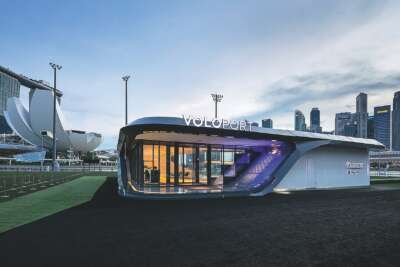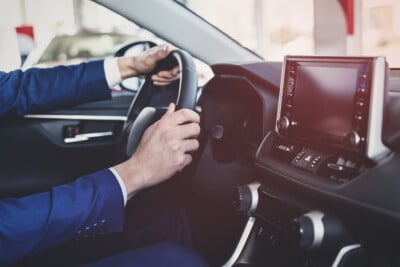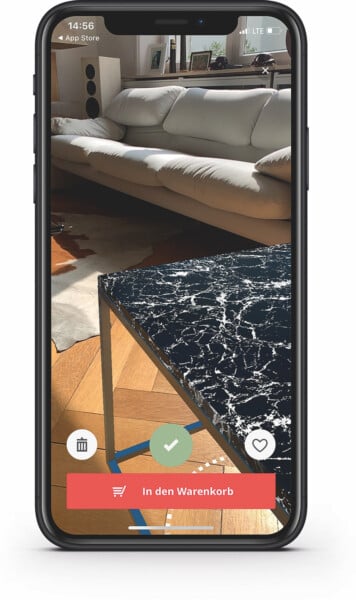Game Changer

- The new BMW 7 comes wit "Remote Software Upgrade"
- Photo: BMW
“Auto is not only old school – it is involved in the new exciting tech of the future and with our journey to electrification, the connectivity in the car, software-defined vehicles versus hardware-defined vehicles, getting autonomous to where it is accepted. This is one of the most exciting places to be.”
Olabisi Boyle, Vice President at Hyundai



New revenue potentials for OEMs through software.
For many years, Tesla has embraced the concept of the “software-defined vehicle.” In the era of e-mobility, all major OEMs are following suit and prioritizing software in vehicle development. A few weeks ago, Mercedes-Benz expressed its commitment to its own software architecture, MB.OS, during a preview event. They stated, “Software will become an essential part of the product development process and the company’s investment plan. By the middle of the decade, 25 percent of the research and development budget will be allocated to software.”
Before completely debuting manufacturer-specific platforms like MB.OS or the VW.OS announced by the Volkswagen Group for 2025, the current focus is on adapting existing systems. One key function takes precedence, which Tesla has perfected over the years: OTA updates (Over-the-Air updates). While the Californian manufacturer already provides customers with regular significant upgrades such as Autopilot improvements and even curiosities like Christmas light shows, other manufacturers are currently occupied with rolling out Over-the-Air updates for existing models and potentially numerous functions.
BMW offers its “Remote Software Upgrade” for over 30 BMW models with Operating System 7 and 8. Through this, they have recently installed a new BMW Digital Key that utilizes iPhones and Android smartphones to unlock the vehicle. At VW, it is primarily the ID. models that can receive extensive software updates through their In-Car Application Server (ICAS) hardware, which can be fed via the mobile network. Mercedes-Benz recently shared a learning-capable software module that personalizes the display and control concept of the MBUX infotainment system based on user behavior. Even drivers of some older models from 2021 onwards have benefited from this.
OTA updates are particularly crucial because they are intended to create a foundation for additional revenues for manufacturers, especially through subscription models. Audi is taking a first step in this direction with its integrated app store in the third-generation Infotainment Building Kit (MIB 3) starting from summer 2023. However, it currently focuses exclusively on third-party apps. Nevertheless, this measure is considered groundbreaking within the group, according to Audi CTO Oliver Hoffmann, who stated, “Audi is the first brand in the Volkswagen Group to introduce the new store for third-party apps. With this solution, Audi drivers will not only enjoy regular software updates but also an even more customizable infotainment system.”
The introduction of the Kia EV9 at the 2023 New York International Auto Show was highly anticipated. One reason for this is that the vehicle is the first to be equipped with Hyundai Motor Group’s new Connected Car Navigation Cockpit (stylized as ccNC). The Korean group has already gained experience with subscription-based revenue models through its connectivity system, Bluelink+. This system already offers functions such as remote start, emergency road assistance, and vehicle diagnostic checks for a monthly fee. With the new software and additional Over-the-Air offerings, Hyundai Motors aims to expand its revenues. Olabisi Boyle, Vice President of Product Planning at Hyundai Motor North America, explained in an interview, “This is the area where future profits will be made, perhaps up to 30 percent,” clarifying that this is in addition to Hyundai’s current revenues. When it comes to the offered services, Hyundai intends to take a more creative approach compared to Tesla’s monthly expensive “Full Self-Driving Beta” or BMW’s widely cited “Functions on Demand” seat heating. Instead, the Hyundai manager wants to offer personalization options and functionalities that provide benefits for numerous individual use cases, stating, “For example, if a dog regularly rides in the car, you could adjust the climate in its spot or open the window.”
“Hyper-personalization” is the buzzword driving almost all manufacturers in the development of paid content and services for their software. The significant challenge is assessing which functions genuinely add value for customers, especially in models used by various drivers, such as family or company vehicles.
In segments with a more specific target audience, this process could be more straightforward. Jeep appeals to the adventurous spirit of drivers with a new feature in its recently unveiled Jeep Wrangler 2024. The factory-installed infotainment system includes “Trails Offroad,” a guide to 62 iconic off-road routes in North America, including the Rubicon Trail in California and Hell’s Revenge in Utah. The “Jeep Badge of Honor Trails” stored in the onboard navigation system at delivery not only provide detailed route guidance but also feature editorial content with difficulty levels, attractions, and expert tips. For even more exploration, drivers can purchase a premium subscription that unlocks access to a catalog of over 3,000 off-road trails.

















